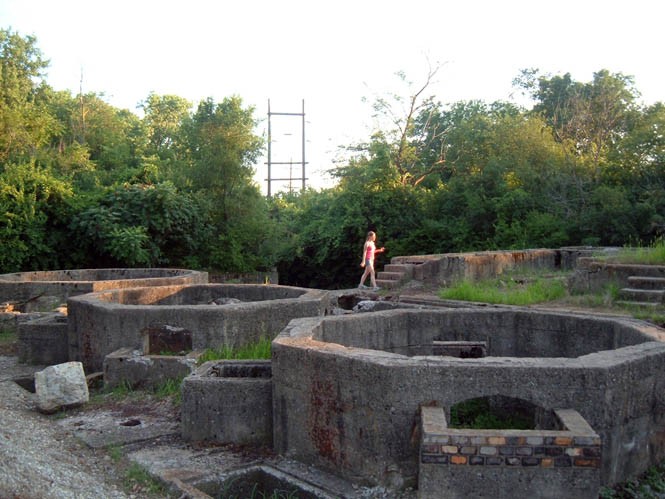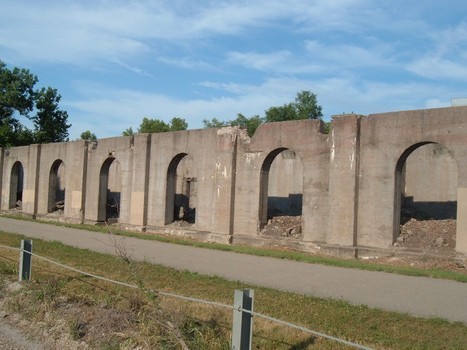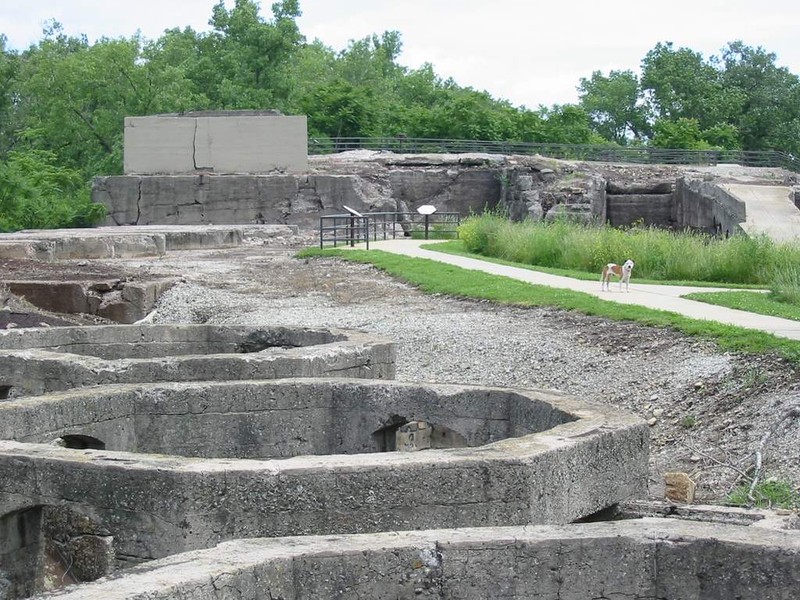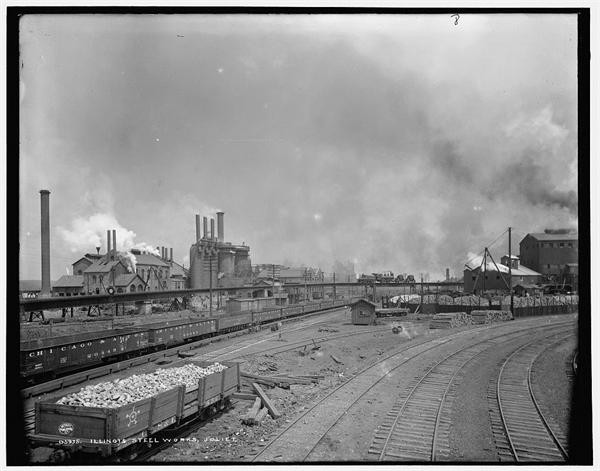Joliet Iron Works Historical Site
Introduction
Text-to-speech Audio
Images
From ChicagoNow.com - picture of the ruins.

From ChicagoNow.com

Source: http://www.tedvillaire.com/wp-content/uploads/2009/11/rubble3.JPG

1890s photo - Credit: http://www.whatwasthere.com/images/uploads/screen/Photo_11014.jpg

Backstory and Context
Text-to-speech Audio
The Joliet Iron Works exists as one of the few preserved factories in the U.S. It was, once, the second biggest steel mill in the nation. Although it started in 1869, the famous Carnagie Steel purchased the area in 1889 and gave it the name, Illinois Steel Company. Over time, by 1898, Federal Steel purchased the grounds, which eventually became U.S. Steel. By then, the grounds had grown from roughly 75 acres to 260 acres. .The factory operated until the 1930s.
The surrounding grounds serve as a physical reminder of the life of the Industrial Revolution through the 20th century, with plenty of rail lines, blast furnaces, and iron and steel factory remnants. Its proximity to navigable water, notably the Des Plaines river, speaks volumes about the nature of this location's significance to a country dependent upon coal, oil, iron, and steel.
Similar to many industrial districts and mining towns, workers often lived and worked close to their workplace, notably in an era when workers rarely owned cars or have the means to afford train tickets. In 1869, worker housing quickly emerged in the area. As per the norm for lower-class workers of the era, the residential area was built on cheap, undeveloped land. In this case, workers resided north of the Iron Works, away from the developed and more populated portions of Joliet located to the south of the large factory.
The grounds also serve as a monument for the labor force - nearly 4,000 at its peak in the by the 1920s -- endured long hours, tough (hazardous) conditions, and received low pay. Many workers suffered injuries - some died. The workforce, largely comprised of first and second generation immigrants were involved in the large-scale 1919 steel strike that involved hundreds of thousands of workers and miners
Although today's site appears more similarly to Roman archaeological ruins, one can take an interpretive walking tour, guided by markers that describe each ruin. Or, there is a formal tour organized from time-to-time that the Forest Preserve describes:
- Discover why Joliet has the nickname "City of Stone and Steel" during this fascinating tour.
- At the Joliet Iron Works Historic Site, an interpreter will guide you through what remains of this once-thriving industrial plant. Learn about iron and steel production and the stories of the men who worked at the site.
- Anyone interested in local history will enjoy this insightful tour of the blue-collar origins of Joliet.
Sources
Gorn, Elliot J. Mother Jones: The Most Dangerous Woman in America. New York: Hill and Wang, 2001.
Keating, Ann Durkin. Chicagoland: City and Suburbs in the Railroad Age. Chicago: University of Chicago Press, 2005.
Pacyga, Dominic. Polish Immigrants and Industrial Chicago: Workers on the South Side, 1880-1922, (Chicago: University of Chicago Press,1991.
Painter, Nell Irvin. Standing at Armageddon: A Grassroots History of the Progressive Era. New York: W.W. Norton and Company, 2007.
Schultz, Mark "Awakening the Historical Imagination," in Nancy Workman and Therese Jones. Dimensions of Curiosity: Liberal Learning in the 21st Century. Washington D.C.: University Press of America, 2004.
Trachtenberg, Alan. The Incorporation of America: Culture and Society in the Gilded Age. 25th Anniversary Edition. New York: Hill & Wang, 2007.
Joliet Iron Works Historic Site: Events Calendar," Forest Preserve District of Will County, reconnectwithnature.org, last accessed September, 2016, http://www.reconnectwithnature.org/preserves-trails/Joliet-Iron-Works
